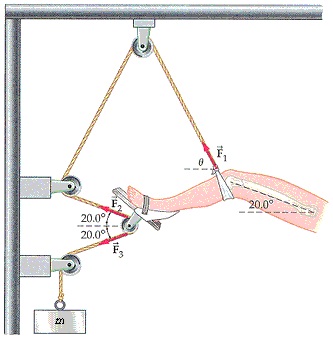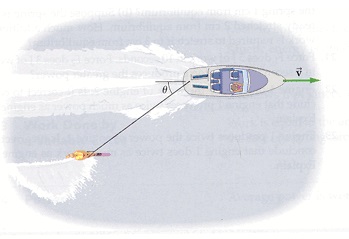Assignment:
Question 1. To immobilize a fractured femur, doctors often utilize the Russell traction system illustrated in the figure below. Notice that one force is applied directly to the knee, F1, while two other forces, F2 and F3, are applied to the foot. The latter two forces combine to give a force F2 + F3 that is transmitted through the lower leg to the knee. The result is that the knee experiences the total force Ftotal = F1 + F2 + F3. The goal of this traction system is to have Ftotal directly in line with the fractured femur, at an angle of 20.0° above the horizontal.
Find the following if m = 3.66 kg.
(a) The angle θ required to produce this alignment of Ftotal.
(b) The magnitude of the force, Ftotal, that is applied to the femur in this case.

Question 2. A block is acted on by a force that varies as (1.9 104 N/m) x for 0 x 0.17 m, and then remains constant at 3230 N for larger x.
(a) How much work does the force do on the block in moving it from x = 0 to x = 0.30 m?
(b) How much work does the force do on the block in moving it from x = 0.10 m to x = 0.40 m?
Question 3. Water skiers often ride to one side of the center line of a boat, as shown in the figure below. In this case, the ski boat is traveling at 15 m/s and the tension in the rope is 80 N. If the boat does 3500 J of work on the skier in 49.9 m, what is the angle θ between the tow rope and the center line of the boat?
